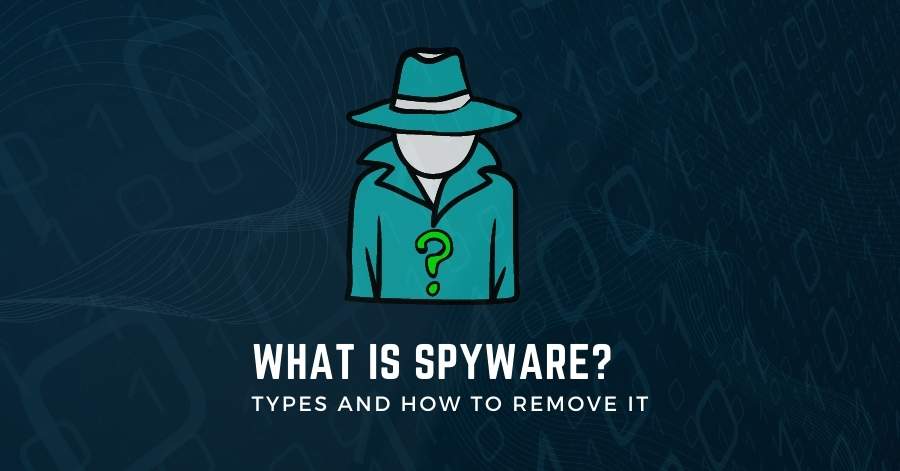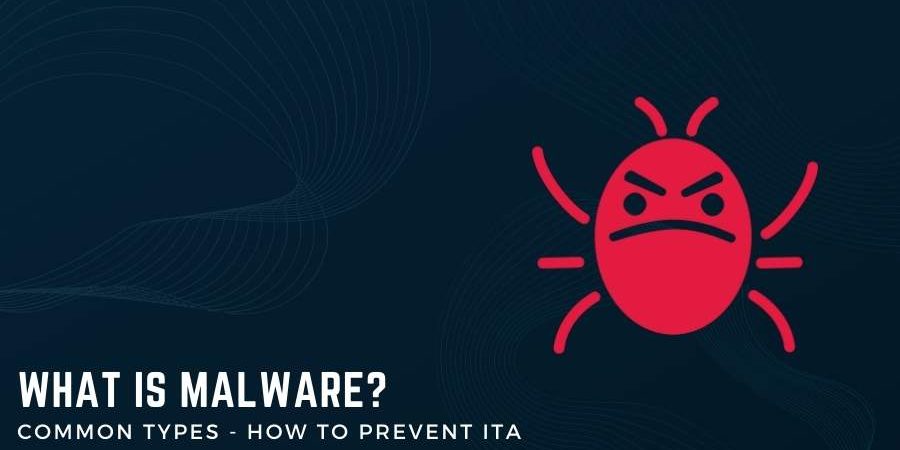Malware is a general term used to describe a variety of malicious software that can infect your computer. This type of software can damage or steal your data, use your computer to attack others, or spy on you. It’s essential to be aware of the different types of malware and know how to scan and remove them if necessary.
This blog post discusses what malware is, its common types, and how to protect your computer. Also, it’ll provide some helpful tips for scanning and removing malware if it does manage to infect your system. Stay safe out there!
What is Malware?
Malware is short for malicious software, and it refers to any software that’s been designed to damage or disable computers. It can come in viruses, worms, Trojans, ransomware, spyware, and more. It can be installed on your computer without your knowledge or delivered through phishing emails, infected websites, or other means.
10 Common Types Of Malware
There are many different types of malware, and they can cause a wide range of problems for your computer. Some malware can steal your personal information, while others can damage your files or even take control of your computer. In some cases, malware can be so destructive that it’s impossible to repair the damage without reformatting your hard drive.
Below are the ten common types of malware that you should be aware of:
1. Viruses
A virus is malware that replicates itself and spreads from computer to computer. It can cause much damage to your computer, and it can be difficult to remove. Some viruses are even designed to disable your antivirus software.
2. Worms
Worms are a type of malware that spreads through networks and infects computers. It can be very destructive and often spread faster than viruses.
3. Trojans
Trojans are a type of malware that masquerades as legitimate software. It can be used to steal your personal information, damage your files or take control of your computer.
4. Ransomware
Ransomware is a form of malware that encrypts your files and holds them, hostage, until you pay a ransom. It is one of the most dangerous types of malware, and it can often be tough to remove.
5. Spyware
Spyware collects information about you and your activities. It can steal your personal information or track your internet activity.
6. Adware
Adware is a type of malware that displays advertising pop-ups on your computer. It can be very annoying, and it can also slow down your computer.
7. Botnets
Botnets are a type of malware that controls infected computers remotely. They are also famous for sending spam or distributing viruses.
8. Scareware
Scareware is malware that tries to scare you into buying fake security software. It can be very effective, and it can often be difficult to tell that it’s a scam.
9. Viral Marketing
Viral marketing is a type of malware that spreads through social media networks. It also spread Trojans and other types of malware.
10. Grayware
Grayware is a type of malware that’s not quite as dangerous as other types of malware, but it can still be annoying and destructive. It can include adware, spyware, and different kinds of unwanted software.
How to Scan for Malware And Remove It?
There are several ways to scan for malware and remove it from your computer. The most effective way to remove malware is with an antivirus program, but you can also use various other tools to clean your computer.
Antivirus Software
Antivirus software is the best way to scan for and remove malware from your computer. It can detect and remove a wide variety of malware and protect your computer from future attacks.
Malware removal tools are the second line of defense against malware. These tools can scan your computer for malware and remove it, but they’re not as effective as antivirus software.
System Restore
System restores can be used to restore your computer to a previous state where the malware was not present. It can be a helpful way to remove stubborn malware from your computer.
Manual Removal
Manual removal is the process of removing malware manually without using any software. This can be difficult, and it’s not recommended for novice users.
Cleaning Your Computer
Cleaning your computer is an excellent way to remove malware and other unwanted files from your system. You can use various tools to clean your computer, including antivirus software, malware removal tools, and system restore.
When you’re cleaning your computer, it’s essential to be careful. You don’t want to remove any necessary files for the operation of your system. It’s also necessary to ensure that you’re using reliable and up-to-date software.
Protecting Your Computer From Future Malware Attacks
You can do a few things to protect your computer from future malware attacks.
Keep Your Antivirus Software Up-to-Date
One of the best ways to protect your computer from malware is to keep your antivirus software up-to-date. Antivirus programs are constantly updated with the latest malware definitions so that they can protect your computer from the latest threats.
Use a Firewall
A firewall can help protect your computer from incoming attacks. It can block any malicious traffic from entering your system and help protect your computer from spyware and other types of malware.
Be Careful with Email
Be careful when opening email attachments. Many viruses are spread through email, so you don’t want to open any attachments that you’re not sure about. It’s also good to avoid clicking on links in suspicious emails.
Use Anti-Spyware Software
Anti-spyware software can help protect your computer from spyware and other types of malware. They can detect and remove spyware from your computer and protect your computer from future attacks.
Update Your Operating System
Keeping your operating system up-to-date is another vital way to protect your computer from malware. Operating system updates often include security patches, which can help protect your computer from malware and other online threats.
If you follow these tips, you can help protect your computer from future malware attacks.
Final Thoughts
Malware is malicious software and can come as viruses, worms, Trojans, ransomware, and spyware. It can be installed on your computer without your knowledge or delivered through phishing emails, infected websites, or other means.
It’s essential to be proactive about your security. Keep your antivirus software up-to-date, use a firewall, be careful with email attachments, and use anti-malware software.
Share this article
About the Author
Waqas is a cybersecurity journalist and writer who has a knack for writing technology and online privacy-focused articles. He strives to help achieve a secure online environment and is skilled in writing topics related to cybersecurity, AI, DevOps, Cloud security, and a lot more. As seen in: Computer.org, Nordic APIs, Infosecinstitute.com, Tripwire.com, and VentureBeat.
More from Iam WaqasRelated Posts

How To Distinguish Fake And Real Virus Warnings On Android
In 2024, Android is the world’s most popular mobile operating system. With over 3 billion user...

Understanding Malware and How to Remove it from Your Website
As a business owner, your e-commerce site is your virtual brick-and-mortar store. It’s how you...

How To Check If Your Phone Is Being Tracked – 6 Common Signs To Check!
Mobile phone tracking is a very serious issue. It is one of the most invasive and potentially damagi...

What Is Spyware? Types and How to Remove it?
Most people have no idea what spyware is, let alone the different types of spyware. Spyware is malwa...

What Is Keylogger – How To Find and Remove It Completely
If you think that you may have a keylogger installed on your computer, you need to take some steps t...


